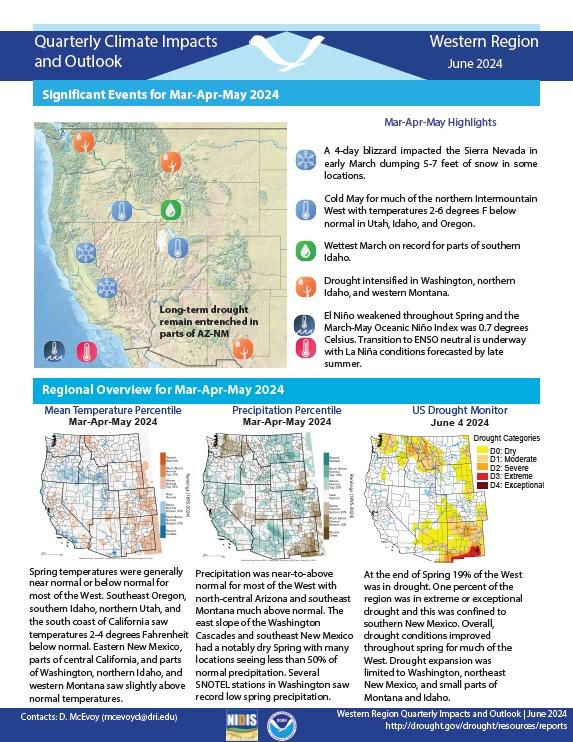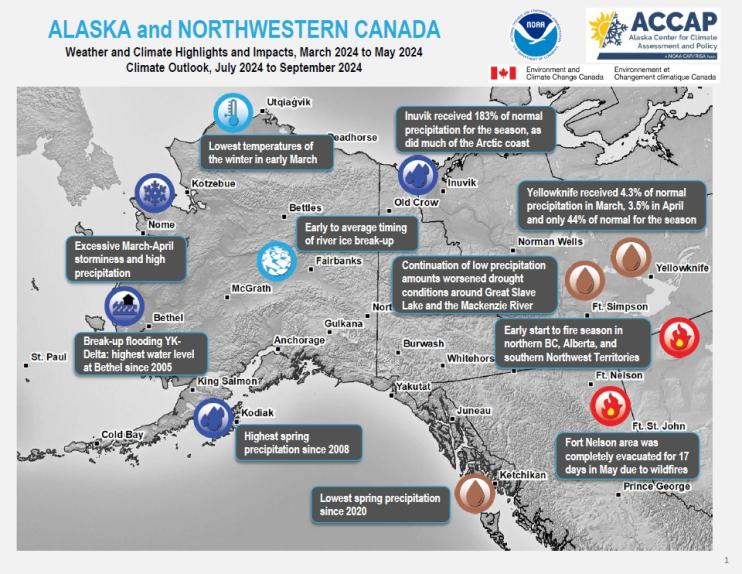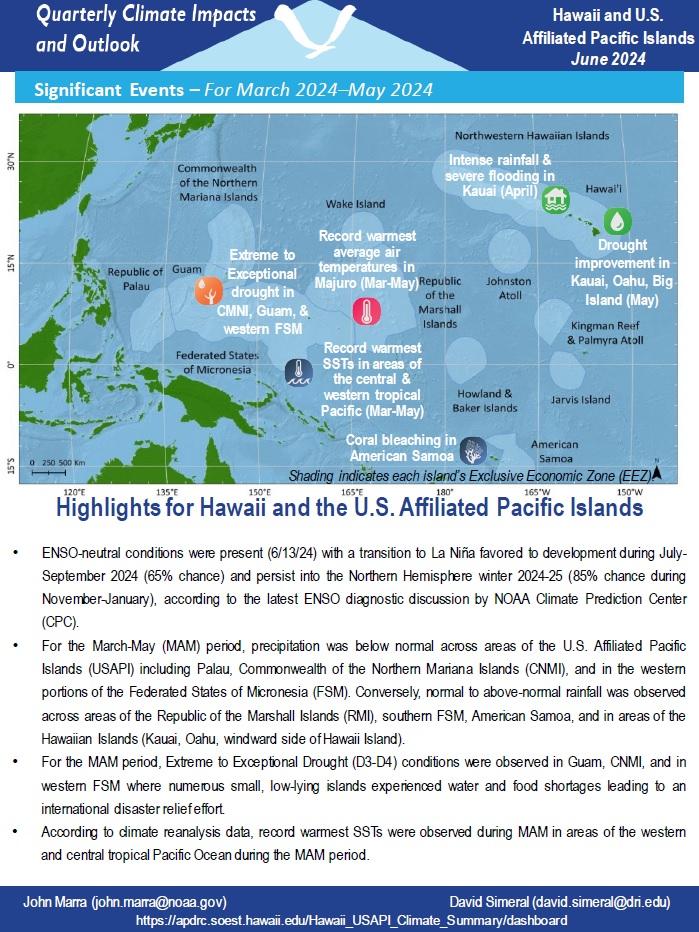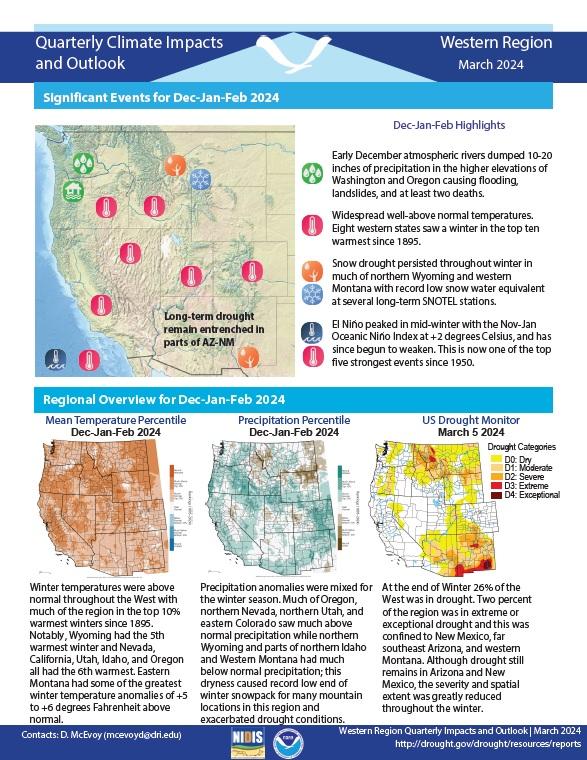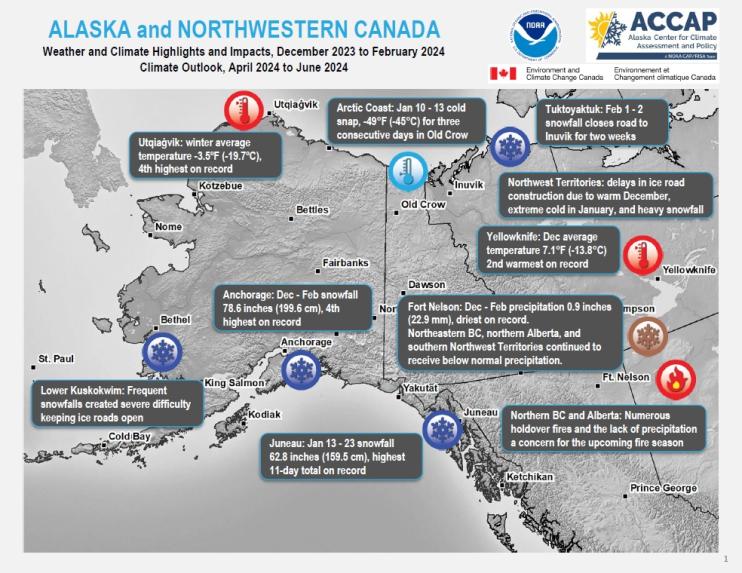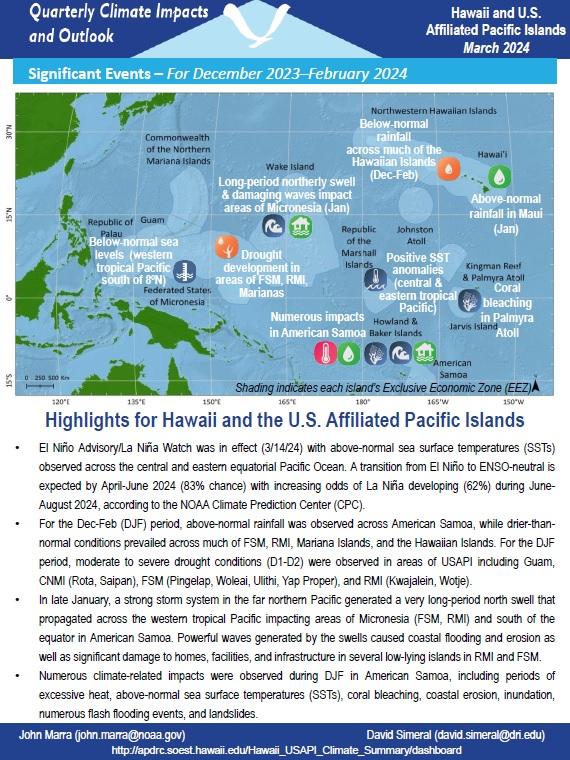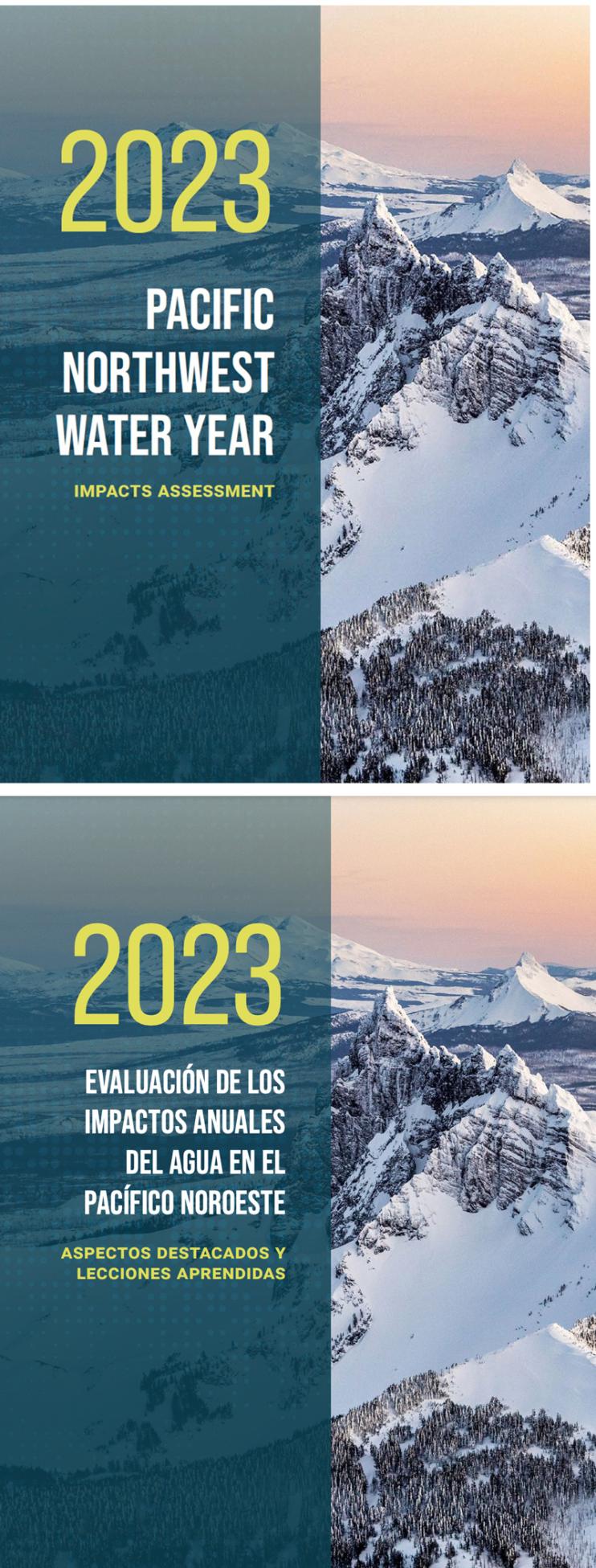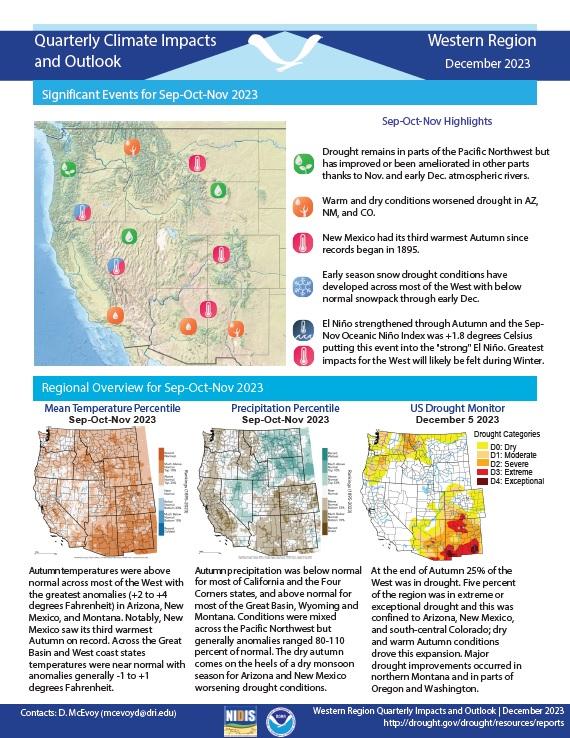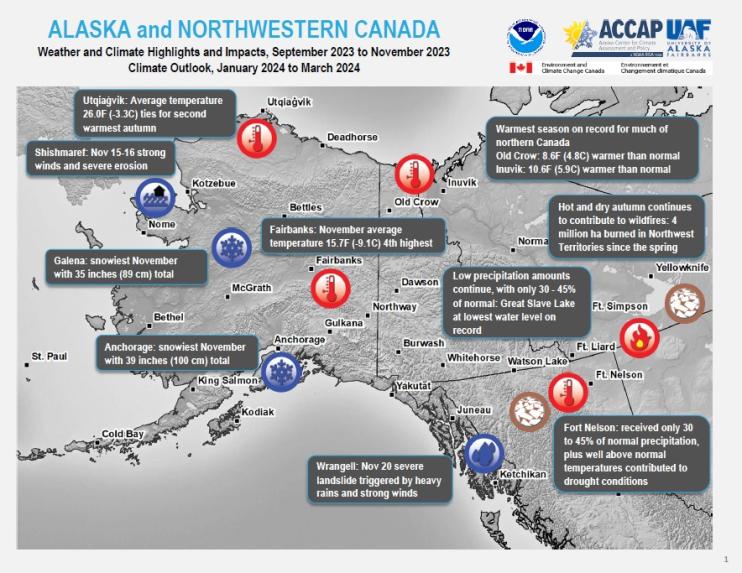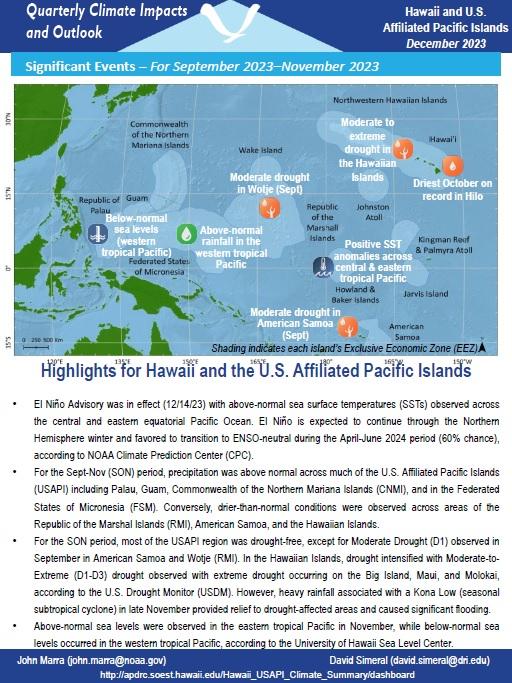Quarterly Climate Impacts and Outlook for the Western Region for March–May 2024. Dated June 2024.
Spring temperatures were generally near normal or below normal for most of the West. Precipitation was near-to-above normal for most of the West with north-central Arizona and southeast Montana much above normal.
Quarterly Climate Impacts and Outlook for Alaska and Northwestern Canada for March–May 2024, with an outlook for July–September 2024. Dated June 2024.
Environment and Climate Change Canada, NOAA, and partners created these climate outlooks to inform the public about recent climate impacts within their respective regions. Each regional report contains easy-to-understand language, and anyone can access them through the U.S. Drought Portal.
Quarterly Climate Impacts and Outlook for the Pacific Region for March–May 2024. Dated June 2024.
Quarterly Climate Impacts and Outlook for the Western Region for December 2023–February 2024. Dated March 2024.
Winter temperatures were above normal throughout the West with much of the region in the top 10% warmest winters since 1895. Precipitation anomalies were mixed for the winter season. Much of Oregon, northern Nevada, northern Utah, and eastern Colorado saw much above normal precipitation while northern Wyoming and parts of northern Idaho and Western Montana had much below normal precipitation.
Quarterly Climate Impacts and Outlook for Alaska and Northwestern Canada for December 2023–February 2024, with an outlook for April–June 2024. Dated March 2024.
Environment and Climate Change Canada, NOAA, and partners created these climate outlooks to inform the public about recent climate impacts within their respective regions. Each regional report contains easy-to-understand language, and anyone can access them through the U.S. Drought Portal.
Quarterly Climate Impacts and Outlook for the Pacific Region for December 2023–February 2024. Dated March 2024.
For the Dec-Feb (DJF) period, above-normal rainfall was observed across American Samoa, while drier-than-normal conditions prevailed across much of FSM, RMI, Mariana Islands, and the Hawaiian Islands. For the DJF period, moderate to severe drought conditions (D1-D2) were observed in areas of USAPI including Guam, CNMI (Rota, Saipan), FSM (Pingelap, Woleai, Ulithi, Yap Proper), and RMI (Kwajalein, Wotje).
The purpose of the 2023 Pacific Northwest Water Year Impacts Assessment is to summarize the water year conditions and sector impacts as a resource for future management of drought and other climate extremes.
Quarterly Climate Impacts and Outlook for the Western Region for September–November 2023. Dated December 2023.
Quarterly Climate Impacts and Outlook for Alaska and Northwestern Canada for September–November 2023, with an outlook for January–March 2024. Dated December 2023.
Environment and Climate Change Canada, NOAA, and partners created these climate outlooks to inform the public about recent climate impacts within their respective regions. Each regional report contains easy-to-understand language, and anyone can access them through the U.S. Drought Portal.
Quarterly Climate Impacts and Outlook for the Pacific Region for September–November 2023. Dated December 2023.
For the Sept-Nov (SON) period, precipitation was above normal across much of the U.S. Affiliated Pacific Islands (USAPI) including Palau, Guam, Commonwealth of the Northern Mariana Islands (CNMI), and in the Federated States of Micronesia (FSM). Conversely, drier-than-normal conditions were observed across areas of the Republic of the Marshal Islands (RMI), American Samoa, and the Hawaiian Islands.


